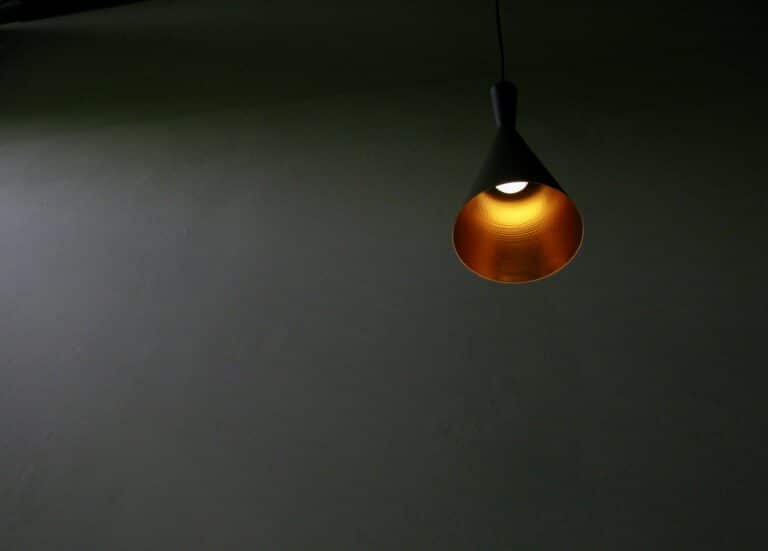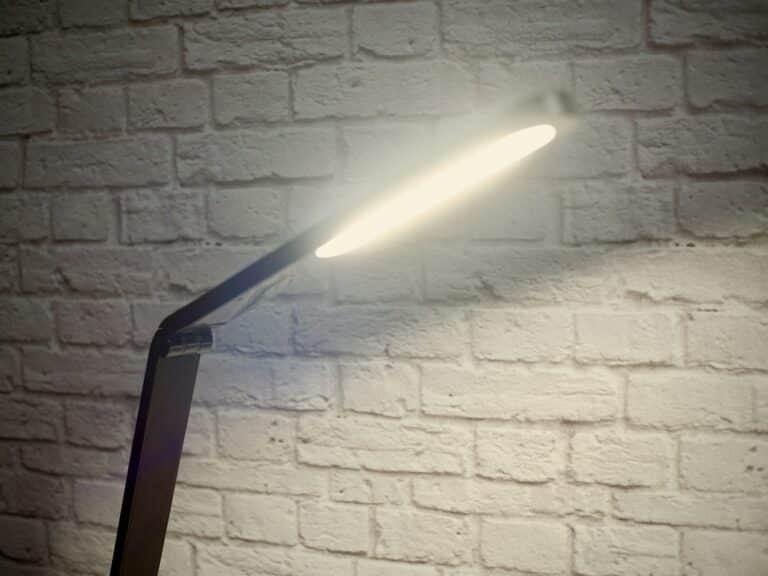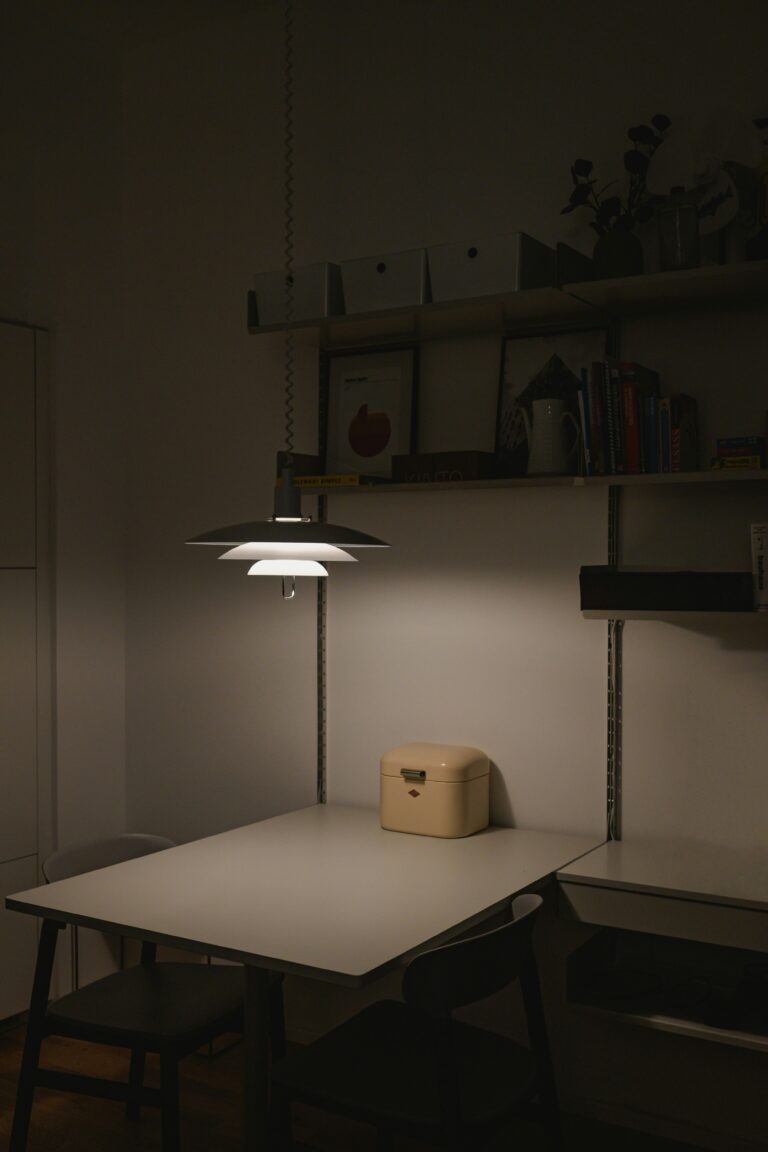You’re fueled by creativity, but you find yourself hitting productivity roadblocks. Ever considered the correlation between your lighting setup and mood? If not, you’re not alone, but this could be the game-changer your remote work life needs. 🌞💡

The nuances of how light affects productivity and mood are still a burgeoning field of study, but what we already know is fascinating and invaluable to anyone seeking to optimize their workspace. This article, “Illuminate Your Productivity: Lighting & Mood Boost Tips for Remote Creatives in Minimalist Workspaces”, is a deep dive into the world of light, mood, and productivity, especially tailored for remote creatives striving for an efficient minimalist workspace.
💡Why Is Lighting So Important?
Before we embark on this enlightening journey (pun intended), it is crucial to establish the ‘why’. Why should you, a busy professional, invest your precious time in understanding and implementing lighting changes? Quite simply, because lighting plays a pivotal role in defining our mood and, consequently, our productivity. It impacts our circadian rhythms, influences our sleep, and directly affects how energized we feel throughout the day. Therefore, as remote workers and creatives, it is imperative that we take the time to understand and harness the power of light in our workspaces.
🌞The Sunlight Effect
Ever noticed how a sunny day uplifts your spirits? Or how your energy dips as the daylight fades? That’s not a coincidence. Our bodies are naturally attuned to the sun’s cycle, and we’ll delve into how you can use this to your advantage in your workspace design.
💡Artificial Light: Friend or Foe?
Not all of us are blessed with abundant natural light in our homes. The good news is, with a little understanding and the right tools, artificial light can be your ally. We’ll explore the best practices and products that can help you mimic the sun’s benefits even in a windowless room.
🌿Minimalist Workspace Lighting
The principles of minimalism are all about removing clutter and distractions. But how does one achieve that perfect balance of functional lighting in a minimalist workspace without adding visual noise? Stay with us as we break it down for you.
🎯Lighting Tips for Improved Mood and Productivity
And finally, the crux of this article, the actionable advice you’re here for. We’ll walk you through practical, easy-to-implement tips that will not only improve your workspace lighting but also give your mood and productivity a noticeable boost.
In the pursuit of your best work-life, understanding how light affects you is a step you can’t afford to skip. So grab a cup of your favorite brew ☕, make yourself comfortable, and join us as we unravel the science and art behind lighting your workspace for maximum productivity and mood enhancement. Welcome to a brighter, more productive future! 💡🌞
Lighting the Way to Enhanced Productivity: The Power of Optimal Illumination
As a remote creative, the environment in which you work can significantly impact your productivity and overall mood. One crucial yet often overlooked aspect of this environment is lighting. It’s not just about having enough light to see; the quality, type, and even color of light can all affect your mood, energy levels, and ability to concentrate. Whether you’re an engineer working on complex software problems or a writer crafting intricate narratives, understanding the impact of lighting can help you create a workspace that illuminates your productivity.
Research has shown that lighting can influence our psychological and physiological state. Exposure to natural light during the day, for example, helps regulate our circadian rhythms and improve our mood, energy, and focus. On the other hand, poor lighting conditions can cause eye strain, fatigue, and even feelings of depression. For remote creatives who may spend long hours working in the same environment, lighting can significantly impact productivity and mental well-being.
In minimalist workspaces, lighting plays an even more prominent role. With fewer distractions and clutter, the lighting becomes a central feature. Getting the lighting right in a minimalist workspace can be a game-changer for your productivity. In this article, we will delve into the science behind the power of lighting, explore the different types of lighting, and provide practical tips for optimizing the lighting in your remote workspace.
The Science Behind the Power of Lighting
Before we delve into the practical aspects of lighting, let’s first understand why it has such a profound impact on our mood and productivity. The key lies in how our bodies perceive and respond to light. Light exposure influences our body’s internal ‘biological clock’ or circadian rhythms, which regulate our sleep-wake cycles, hormone release, and even mood and alertness.
Exposure to bright light, particularly in the morning, signals our body to wake up and become alert. This light exposure can increase our serotonin levels, a hormone that boosts our mood and helps us feel calm and focused. On the other hand, dimmer lights signal our body to produce melatonin, a hormone that promotes sleep. However, prolonged exposure to dim or poor lighting during the day can lead to feelings of fatigue, lethargy, and even depression.
A study by Northwestern Medicine and the University of Illinois at Urbana-Champaign found that workers exposed to more natural light during the day reported better sleep, more physical activity, and improved quality of life compared to workers with less light exposure. So, the key to enhancing productivity and mood lies in finding the right balance and timing of light exposure. This video by Seeker (‘How Light Affects Your Productivity’) offers a quick and detailed overview of how light impacts our productivity.
Types of Lighting: What Works Best for You?
When it comes to lighting your workspace, not all lights are created equal. The three main types of lighting to consider are ambient, task, and accent lighting. Each has its role and purpose, and the best workspaces typically include a combination of all three.
Ambient lighting, also known as general lighting, provides the overall illumination of a space. It should be comfortable and enable you to see and move around safely. Task lighting, as the name suggests, is targeted lighting that aids you in performing specific tasks that require more light, such as reading, writing, or drawing. Accent lighting, while not essential for a workspace, can add depth and dimension to a room, highlighting specific areas or objects.
For a minimalist workspace, a balance of ambient and task lighting is usually sufficient. You might opt for a bright overhead light for ambient lighting, paired with a desk lamp with adjustable brightness for task lighting. The color temperature of your lights (measured in Kelvin) can also influence your mood and productivity. Warmer lights (lower Kelvin) can create a cozy and relaxed atmosphere, while cooler lights (higher Kelvin) can help increase concentration and alertness.
Practical Tips for Optimizing Your Workspace Lighting
Now that we understand the science behind lighting and the different types of lighting let’s explore some practical tips to optimize the lighting in your minimalist workspace.
Firstly, take advantage of natural light as much as possible. Position your workspace near a window, if feasible, and work during daylight hours. Natural light is the gold standard when it comes to lighting, as it has the full spectrum of light that our bodies are adapted to. However, be mindful of the direction of the light to avoid direct sunlight on your screen, which can cause glare and eye strain.
Secondly, choose your artificial lighting carefully. Opt for LED lights, which are energy-efficient and have a longer lifespan than traditional bulbs. LEDs also offer a range of color temperatures, allowing you to select a cooler or warmer light based on your preference and the task at hand. If you frequently work in the evenings, consider investing in a light therapy lamp, which can simulate daylight and help maintain your circadian rhythms.
Lastly, adjust your lighting throughout the day. Just as our body’s need for light changes throughout the day, so should your lighting. Use brighter, cooler lights in the morning to kickstart your productivity, and switch to warmer, dimmer lights in the afternoon and evening to wind down. Software like f.lux can adjust your screen’s brightness and color based on the time of day, reducing eye strain and promoting better sleep.
Lighting and Mood: Creating a Space that Inspires
Beyond productivity, lighting can also significantly impact your mood and creativity. In minimalist workspaces, where the environment is pared down to the essentials, lighting becomes a central element of the design. How you light your workspace can create different moods, inspire new ideas, and even affect your well-being.
Direct, intense light can create a high-energy, focused atmosphere, suitable for tasks that require concentration and attention to detail. On the other hand, softer, indirect light can create a calm and relaxed mood, sparking creativity and free thinking. Colored lights, while not typically used in workspaces, can also influence mood. For instance, blue light is associated with calm and focus, while yellow light can stimulate creativity.
When it comes to mood, it’s also essential to consider the psychological impact of your workspace’s aesthetic. A well-lit, clean, and organized workspace can reduce stress, boost your mood, and improve productivity. On the other hand, a cluttered and poorly lit workspace can have the opposite effect.
Remember, everyone is unique, and what works for one person may not work for another. Some people thrive in bright, cool light, while others prefer a warmer, dimmer environment. The key is to experiment with different lighting setups and observe how they impact your mood, productivity, and well-being. Keep what works, adjust what doesn’t, and remember – the right light can truly illuminate your productivity.
Illuminate Your Productivity: A Comparison of Lighting Options
| Type of Light | Benefits | Drawbacks |
|---|---|---|
| Natural Light | Full spectrum of light, boosts mood and productivity, free | Dependent on time of day and weather, potential for glare |
| LED Lights | Energy-efficient, long lifespan, adjustable color temperature | Can be expensive initially, may not offer the full light spectrum |
| Light Therapy Lamp | Simulates daylight, can help maintain circadian rhythms | Can be expensive, not suitable for all tasks |
In conclusion, the importance of lighting in a workspace cannot be overstated. From influencing our mood and productivity to shaping the aesthetic of our workspace, the power of light is truly transformative. By understanding this power and making thoughtful lighting choices, you can illuminate your productivity and create a workspace that inspires.
Conclusion
In conclusion, we have journeyed through a myriad of topics, unmasking the complex layers that are part of the world of IT and engineering. We have taken a deep dive into their intricate intricacies, illuminating the intricate web of connections that intertwine to make these fields what they are. From the foundations of software engineering, to the transformative power of IT in the modern world, every facet of this article has been an exploration of knowledge.
Our journey started with an insightful probe into the principles of software engineering. We shed light on the fundamental tenets that underpin this crucial discipline. Here, we underscored the pivotal role of solid programming practices, the essence of testing and debugging, and the criticality of maintaining excellent software documentation. It was a journey of unraveling the importance of these foundational elements in ensuring the development of high-quality software solutions. 📝💻
We then transitioned into an illuminating discourse on the transformative power of IT in the modern world. The article highlighted the extensive reach of IT in various sectors, including healthcare, finance, education, and entertainment, among others. We revealed how the pervasive adoption of IT solutions is driving innovation, improving efficiency, and catalyzing a new age of digital transformation.
As we conclude, it is crucial to reiterate the importance of these disciplines in today’s world. Software engineering and IT form the backbone of our digital society. They enable the creation of innovative solutions that improve our lives and propel our world forward.
I hope you’ve found this article both informative and engaging. Remember, your contribution to the discussion enriches the learning experience for everyone. I encourage you to share your thoughts, ideas, or questions in the comments section below.
Don’t hesitate to share this article with your network. You never know who might benefit from the insights shared here. Let’s continue to demystify these complex concepts together, fostering a community of learning and growth. 🚀
Thank you for taking the time to read this article. Keep exploring, keep learning, and keep pushing the boundaries of what you know. Knowledge is a journey, not a destination. 💡
Please check out these additional resources for further reading:
– [Software Engineering Basics](https://www.softwareengineeringbasics.com)
– [IT Transformation](https://www.ittransformation.com)
Remember, in a world that’s constantly changing, the biggest risk is not taking any risk at all. Dare to learn. Dare to grow.
Source:
– [Software Engineering](https://www.softwareengineering.com)
– [IT and the Modern World](https://www.itmodernworld.com)
Continue to be curious, continue to question, and most importantly, continue to learn.
Until next time! 👋



